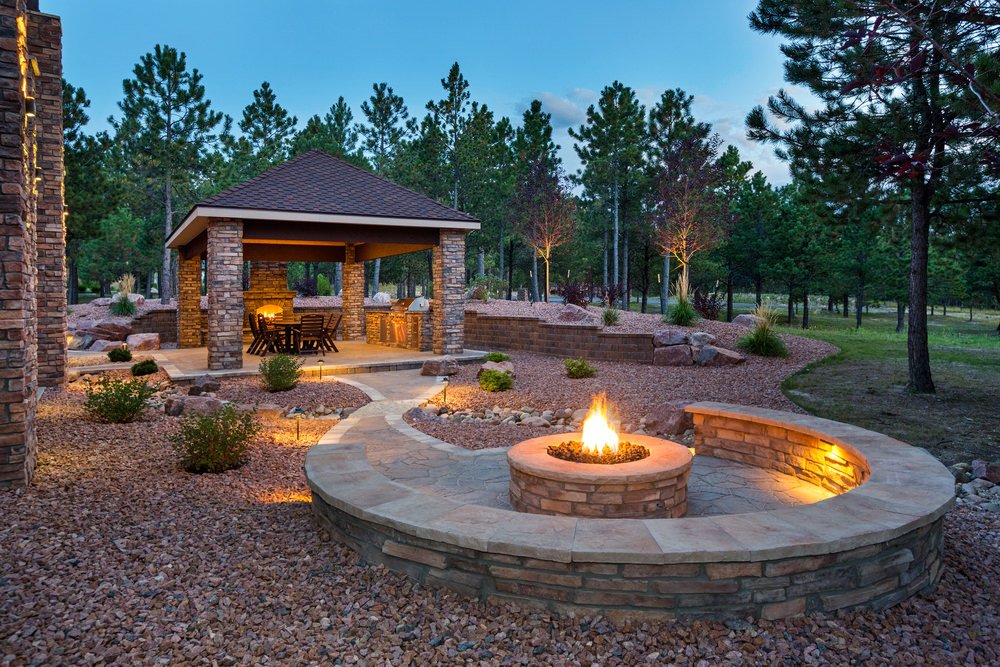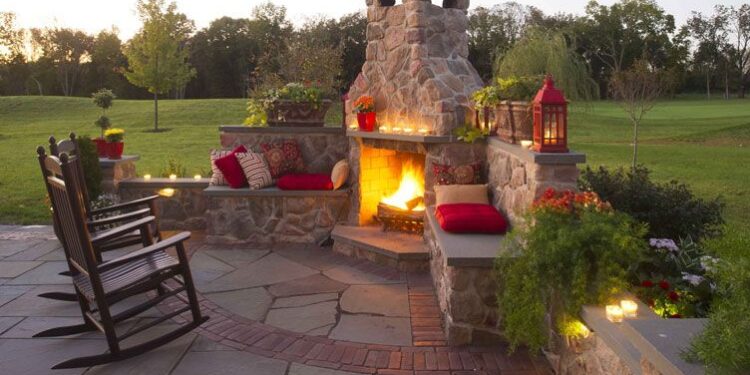Fire pits aren’t the easiest things to buy given that it has to meet certain requirements to be the perfect fit for your outdoor space. You aren’t alone, there are plenty of people like you who don’t know either, and would like to take help from experienced architects and designers.
You need to consider certain factors before coming to a decision. Here are some tips that will aid you in getting started:
Cost
The cost of a fire pit may vary between $100 to $5000 depending on your requirement. Fire pits made of stacked stones in a ring, or a basic model made of metal and set up only for burning wood are quite cheap and fall in the lower end of the price range. On the other hand, fire pits that stand freely are made of stone, concrete, or powder-coated metal which fall in the mid-price range depending on the design. Custom and built-in models will fall on the higher end of the price list. You can visit The Fire Pit Store to have a better idea about the costs.
Materials
Choosing a fire pit made of the right material is equally important because a variety of materials such as stone, metal, concrete or a mixture of multiple materials may be used to build one. Therefore, select a material that conforms with your taste, blends in with the design of your backyard, and can tackle stains and frequent usage.
According to architects, concrete fire pits are durable but can stain from soot. Similarly, powder-coated material can get hot. On the other hand, natural stone can stain and occasionally crack from heat if incorrectly built.
You can select the fire media i.e. the material in the flame area covering the burner if you are using natural gas or propane-burning models. Options are ranging from decorative balls, lava rocks, and fire-glass in different colors, sizes, and shapes.
Choice of Fuel
Even though using timber is the most obvious fuel option, you may choose clean-burning ethanol/bioethanol products, gels that have isopropyl alcohol or methanol base, as well as faux logs i.e. the ornamental logs used in outdoor fireplaces.
Alternatives for timber can be used in spaces both large and small, but wood should only be used in places where there isn’t any risk of embers landing on flammable plant life or built structures.
Whether you choose timber, wood, propane or natural gas, it is essential to consider safety requirements and environmental concerns. Although fire pits that burn wood offer a nice fire crackling sound, it causes air pollution that needs to be regulated to protect the environment.

Natural gas and propane are environmentally friendly because it is smoke-free, easier to clean, and can be switched on and off. Bioethanol is also good for the environment because the fume it emits is the cleanest.
Biofuel logs are a great alternative to wood because these flammable briquettes contain recycled coffee grounds. It burns better than wood and is a cleaner source of energy compared to coal.
Even if you do go for wood, then use dry hardwoods such as red gum or Jarrah because it burns longer and is cleaner. However, softwoods such as pine burn quickly and will require more wood to keep the fire going and as a result, you have to manage more smoke. You can only burn timbers that are natural and untreated.
Style
There are various models of fire pits available in different shapes, sizes, and designs that can coordinate with backyards of any style, and will meet the needs of homeowners. The challenge is how to narrow down your options and find the ideal one for you. You can start by identifying a fire pit that will complement the existing design of your backyard in terms of style, color, shape, or material.
In addition to choosing a fire pit that complements the overall landscape style, you should also consider how you intend to use the model you have chosen. Look out for features that fulfill you and your family’s purpose e.g. if you prefer resting a glass on the edge of a fire pit then you have to ensure there is enough space around the lip of the pit so that your glass of wine doesn’t warm up after five minutes.
Size
The sizes of fire pits range from small and portable to ones that are larger with built-in styles. Pick the one that is within your budget and fits in with your location. Fire pit models bought from stores are usually between twenty-four and thirty inches in diameter whereas built-in ones range between thirty-six and fifty-eight inches.
Height will vary from low-lying fire bowls to tall models. If you prefer resting your feet on the lip of the fire pit, then choose a model that is even with, or a little lower than the height of a standard seat which is typically eighteen inches. The height of a fire pit in comparison to the height of the seat affects reflected warmth.
If you prefer to get warm from your seat then go for a lower fire pit that is around eighteen to twenty inches because it provides more heat to the body.
You should pay attention to the space you will need for seating arrangement and circulation when determining the size of the fire pit. It is better to plan on five to seven feet around every edge of a fire pit to make room for chairs and free movement through the area. It is recommended to have enough space for big, comfy chairs and ample mobility.
If you are planning on adding built-in seating then a distance of forty and forty-eight inches between the back wall of the seating area and the fire should be maintained.
Conclusion
Whichever Fire pit you choose, one thing is certain and that is the satisfaction you will get when your friends and family come to hang out in your backyard that will instantly add to the lively ambiance. Enjoy while you can!






